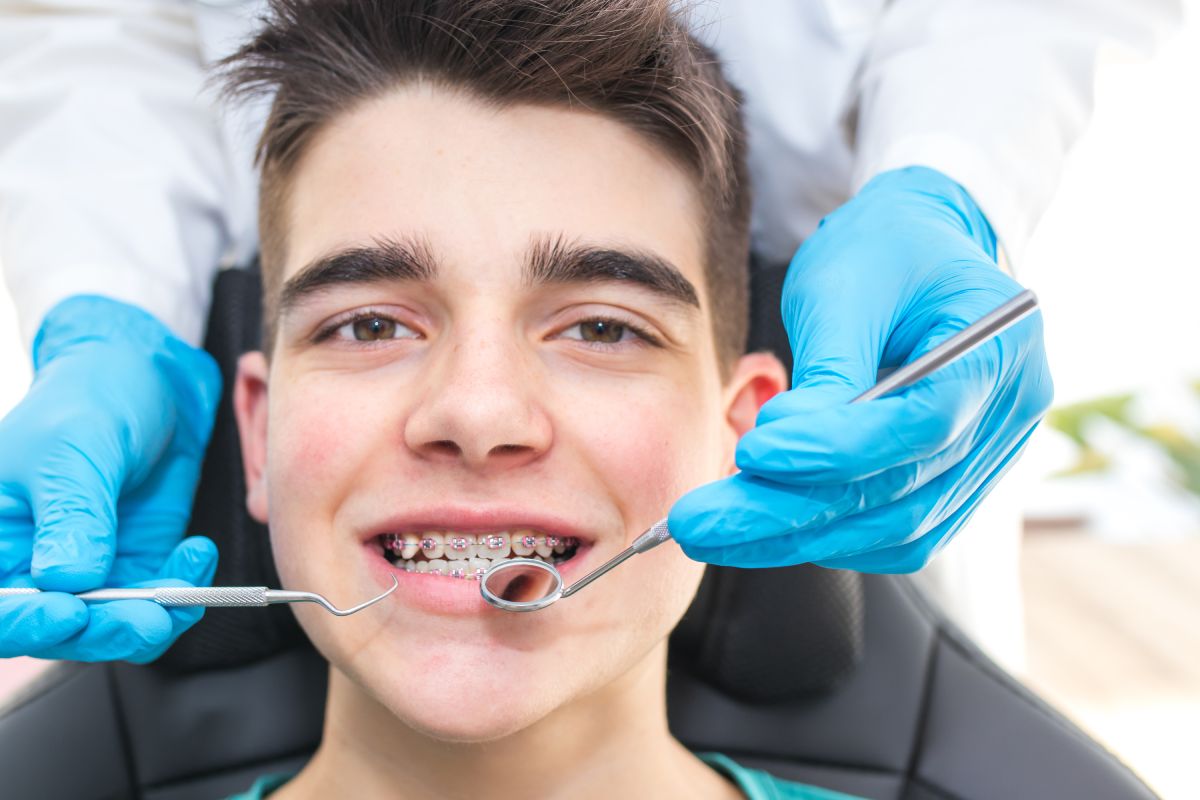Causey Orthodontics Fundamentals Explained
Table of ContentsSome Ideas on Causey Orthodontics You Need To KnowCausey Orthodontics Fundamentals ExplainedThe Best Guide To Causey OrthodonticsCausey Orthodontics - QuestionsThe Ultimate Guide To Causey Orthodontics
Neglecting occlusal relationships, it was typical to eliminate teeth for a selection of dental concerns, such as malalignment or congestion. The concept of an undamaged teeth was not commonly appreciated in those days, making bite connections seem irrelevant. In the late 1800s, the idea of occlusion was important for producing trustworthy prosthetic replacement teeth.As these principles of prosthetic occlusion advanced, it came to be a very useful device for dentistry. It was in 1890 that the job and impact of Dr. Edwards H. Angle began to be really felt, with his contribution to modern orthodontics particularly significant. At first concentrated on prosthodontics, he taught in Pennsylvania and Minnesota prior to guiding his attention in the direction of dental occlusion and the treatments required to keep it as a normal problem, thus coming to be recognized as the "daddy of contemporary orthodontics".

The idea of optimal occlusion, as postulated by Angle and integrated right into a classification system, allowed a change in the direction of dealing with malocclusion, which is any kind of discrepancy from regular occlusion. Having a full set of teeth on both arches was very sought after in orthodontic treatment because of the need for precise relationships between them.
The Best Strategy To Use For Causey Orthodontics
As occlusion ended up being the key concern, facial percentages and looks were overlooked - cheapest orthodontist near me. To achieve perfect occlusals without using external forces, Angle postulated that having perfect occlusion was the most effective way to obtain optimal face appearances. With the passing away of time, it ended up being rather evident that even a remarkable occlusion was not ideal when considered from a visual perspective
It ended up being noticeable that orthodontic treatment can adjust mandibular growth, bring about the formation of functional jaw orthopedics in Europe and extraoral force steps in the US. Nowadays, both useful home appliances and extraoral devices are applied around the world with the goal of modifying development patterns and kinds. Pursuing true, or at the very least improved, jaw partnerships had come to be the major purpose of treatment by the mid-20th century.
The 4-Minute Rule for Causey Orthodontics
 Till the mid-1970s, dental braces were made by wrapping metal around each tooth. https://www.localhomeservicepros.com/health-care/causey-orthodontics-170182., it came to be feasible to rather bond metal braces to the teeth.
Till the mid-1970s, dental braces were made by wrapping metal around each tooth. https://www.localhomeservicepros.com/health-care/causey-orthodontics-170182., it came to be feasible to rather bond metal braces to the teeth.Andrews provided an informative interpretation of the perfect occlusion in irreversible teeth. This has actually had meaningful impacts on orthodontic treatments that are provided regularly, and these are: 1. Proper interarchal partnerships 2. Right crown angulation (suggestion) 3. Correct crown inclination (torque) 4. No rotations 5. Limited get in touch with points 6. Apartment Contour of Spee (0.02.5 mm), and based upon these principles, he uncovered a treatment system called the straight-wire home appliance system, or the pre-adjusted edgewise system.
The advantage of the design lies in its bracket and archwire mix, which calls for just marginal cable bending from the orthodontist or medical professional (cheapest orthodontist near me). It's aptly named after this function: the angle of the port and thickness of the brace base inevitably identify where each tooth is positioned with little demand for added manipulation
What Does Causey Orthodontics Do?
Both of these systems utilized similar braces for each tooth and required the bending of an archwire in three airplanes for locating teeth in their preferred settings, with these bends determining ultimate positionings. When it pertains to orthodontic home appliances, they are separated right into two types: removable and dealt with. Removable devices can be tackled and off by the person as called for.

Thus, nearly all modern-day fixed home appliances can be considered variations on this edgewise home appliance system. Early 20th-century orthodontist Edward Angle made a significant payment to the globe of dentistry. He created four distinctive appliance systems that have actually been used as the basis for lots of orthodontic treatments today, barring a few exceptions.
The Basic Principles Of Causey Orthodontics

The cord ended in a thread, and to relocate it ahead, an adjustable nut was used, which enabled a rise in area. By ligation, each individual tooth was connected to this extensive archwire (orthodontist services). Because of its minimal series of activity, Angle was unable to achieve accurate tooth positioning with an E-arch
These tubes held a firm pin, which can be repositioned at each appointment in order to move them in position. Called the "bone-growing home appliance", this gizmo was thought to motivate healthier bone growth because of its capacity for transferring force directly to the origins. Applying it confirmed frustrating in reality.